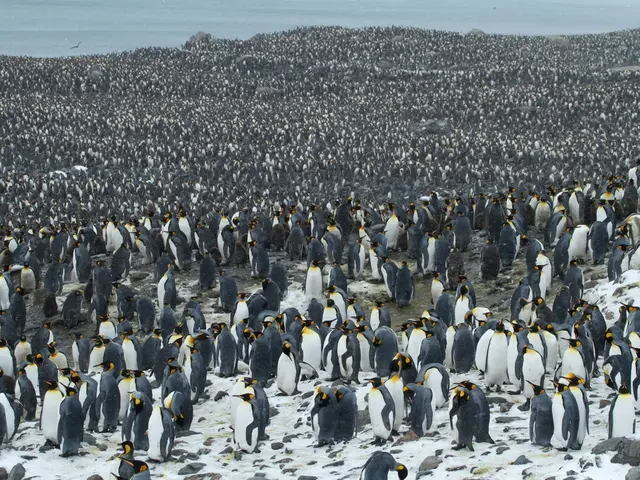Increased oil exploration activities detected within Ugandan national park and marshland, as shown by satellite imagery.
Murchison Falls National Park, a vital resource for local communities and the tourism sector, is facing threats from oil activity. The East African Crude Oil Pipeline (EACOP) project, currently under construction by French multinational TotalEnergies, is at the center of the controversy. The development within the park includes the construction of roads and drilling sites, as well as the clearing of vegetation. U.S.-based environmental watchdog Earth Insight analyzed satellite images and found that 630 square kilometers (243 square miles) of vegetation near the park have been cleared for the pipeline's development. The analysis also showed that 22% of a feeder pipeline from Tilenga, the starting point of the EACOP project, has been built. One of the drilling sites cleared in 2025 is located on the border of the Murchison Falls-Albert Delta Wetland System, another Ramsar site, near the Victoria Nile River. This development is causing concern due to its potential impact on biodiversity and local livelihoods. The Murchison Falls-Albert Delta Wetland System hosts a rich variety of waterbirds and is crucial to freshwater fisheries for local communities. The development within Murchison Falls National Park, a Ramsar site, poses similar risks. The Ugandan government approved the Tilenga oil project, and the Petroleum Authority of Uganda (PAU) is the state body responsible for overseeing the project. However, TotalEnergies has refused to reconsider drilling oil in Murchison Falls National Park, despite concerns raised by civil society and tourism sector stakeholders. Nabiruma, a frontline activist against the EACOP project, has led campaigns against the jailing of fellow critics. The development of the EACOP project has been a topic of controversy for years, with activists leading campaigns against it. TotalEnergies didn't respond to Mongabay's request for comment regarding the ongoing development within Murchison Falls National Park. The company's other oil projects in the region, such as in the Republic of Congo, have previously been accused of hydrocarbon pollution. The EACOP pipeline will run 1,443 kilometers (897 miles) from Uganda to Tanzania for export. As the development within Murchison Falls National Park continues, the future of this vital ecosystem and the livelihoods it supports remain uncertain.
Read also:
- Federal petition from CEI seeking federal intervention against state climate disclosure laws, alleging these laws negatively impact interstate commerce and surpass constitutional boundaries.
- President von der Leyen's address at the Fourth Renewable Hydrogen Summit, delivered remotely
- Unveiling Innovation in Propulsion: A Deep Dive into the Advantages and Obstacles of Magnetic Engines
- Intensified farm machinery emissions posing challenges to China's net-zero targets








